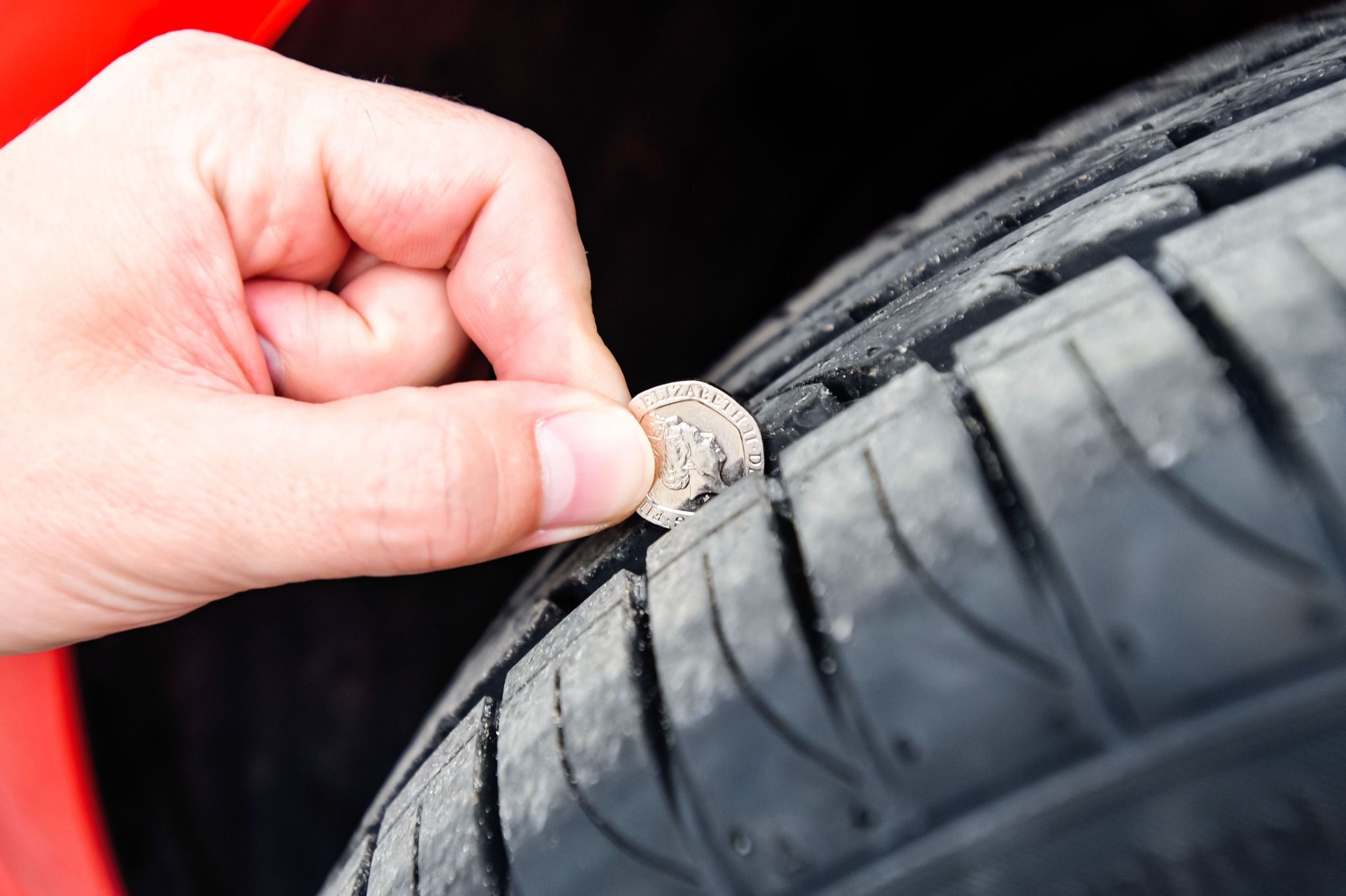
Tyre Safety Month
By Motor Match • 29/09/2024
October marks Tyre Safety Month, bringing into focus an area of car maintenance which a lot of motorists neglect.
October marks Tyre Safety Month, bringing into focus an area of car maintenance which a lot of motorists neglect. As the main point of contact between vehicle and road, tyres are absolutely crucial to a car’s safety. It’s why checking them is so important.
But what exactly should you be looking at in order to ensure that your tyres are in tip-top shape? These are some of the key things to check.
Tread depth
The amount of tread that a tyre has is absolutely crucial to a tyre’s performance. Without sufficient tread, a tyre can’t grip nor corner effectively - and it’ll struggle to properly displace water, too. Thankfully, it’s quick and easy to check the amount of tread your tyres have.
The best way is with a 20p piece. Simply insert the coin into the tyre’s grooves and, if the outer band of the tyre is obscured, then the tyre is legal. However, if you can see the grooves, it’s definitely best to look at getting the tyres replaced.
Remember, the legal tread depth here in the UK is 1.6 millimetres. If it’s found that you’re driving with tyres underneath this threshold, then you could be facing a fine of up to £2,500 per tyre and penalty points on your licence.

Wear and tear
Like most consumable parts on a car, the tyres do wear out over time in more ways than just tread. So aside from checking the grooves of a tyre, you should be giving them a general inspection on a regular basis too.
Check the sidewalls of the tyre. Are there any cuts and bulges? If so, it’s probably best to swap them out for new rubber - either issue could quickly result in a blowout, which has the potential to be incredibly dangerous.
If your tyres have been on the car for some time, they may have become dry and cracked. Again, though they might be legal in terms of tread depth, it’s often better to have these replaced.

Pressures
Tyre pressures are key to a tyre’s effectiveness. Even a small decrease in pressure can result in reduced braking performance and control in the wet, as well as meaning your car uses more fuel too - hitting your running costs.
Again, it’s an aspect of car maintenance which is really easy to check. Find the correct pressures for your vehicle either in the car’s handbook or under the fuel filler cap.
Then, it’s just a case of inflating them to the right pressure. You can do this either with a home compressor, or with a compressor at a garage.

You may also like…